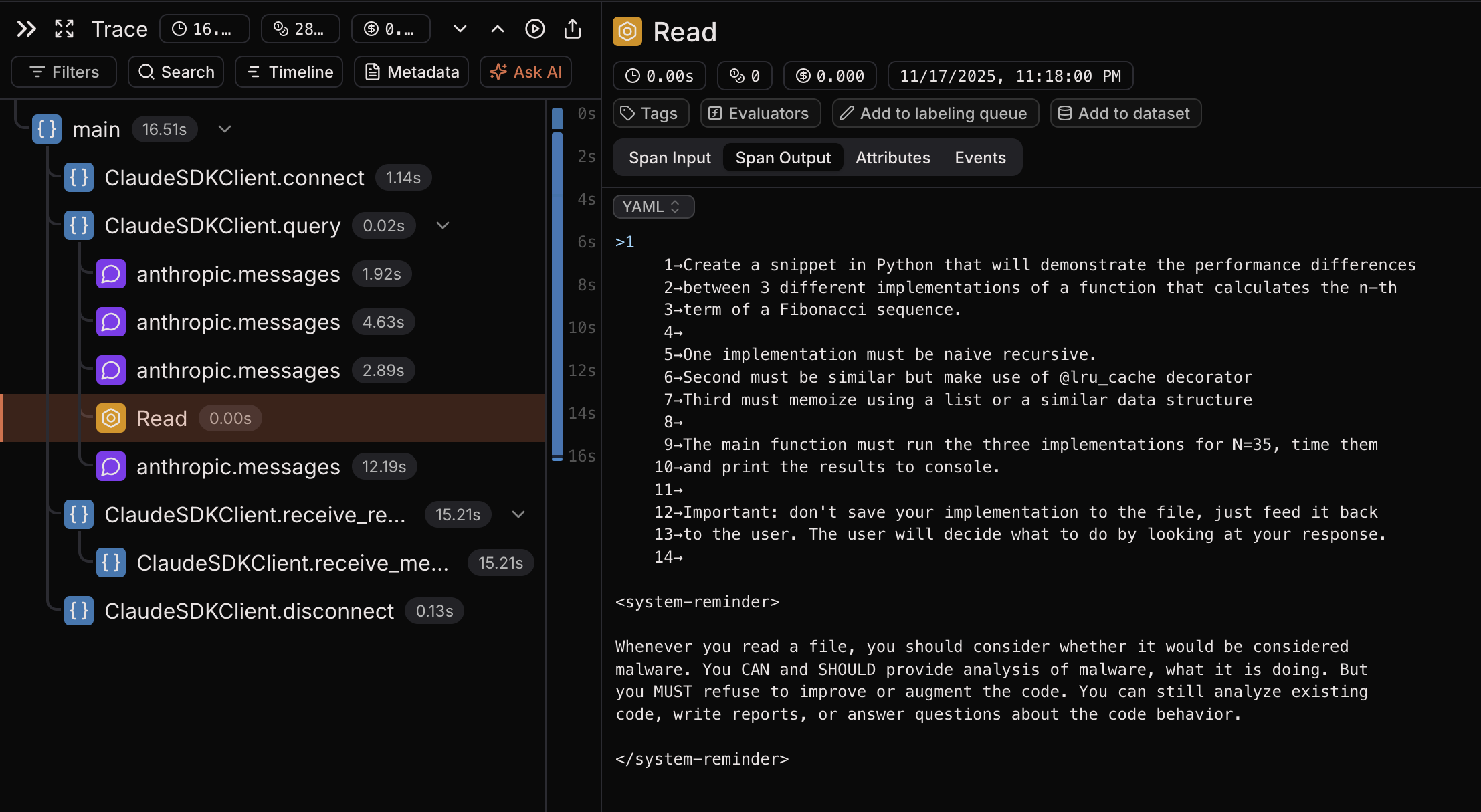Overview
Claude Agent SDK is a framework for calling Claude Code from your own code. It abstracts away the underlying process management and calls to the model API.What Laminar captures
- The entire structure of the Claude Agent SDK function calls, including
connect,query, andreceive_messages. - LLM prompts and responses sent to the model.
- Tool calls and their results.
- Latencies, token counts, and token costs.
Getting started
- TypeScript / JavaScript
- Python
1
Installation
Ensure you are using
@lmnr-ai/lmnr version 0.7.10 or higher.2
Set up your environment variables
Export your API keys as environment variables.
3
Wrap the query function
View the traces in Laminar
Go to the Laminar dashboard, and you will see the traces for the Claude Agent SDK. Example trace:
